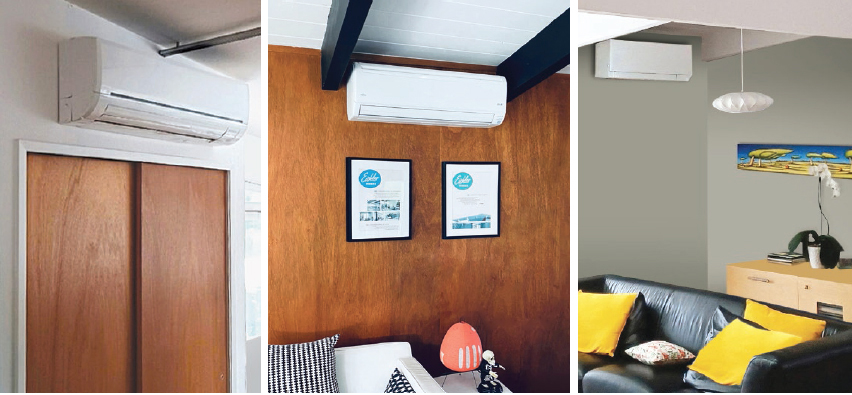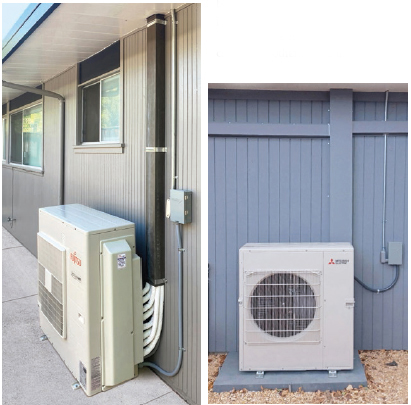Rise of the Mini-split - Page 2
 |
|
|
Big plus: energy efficiency
Certainly, the energy efficiency of mini-split systems, which operate on 100 percent electricity, is a major reason for their U.S. popularity in recent years.
"With global warming, cities are now shying away from gas completely," says Sainz. "Electric is more effective, consumes less energy, and is much better for the environment."
Rebholtz adds that "a conventional system can almost cause a brownout [partial outage] in your home. But with a mini-split system, when it calls for heating or air conditioning, the outdoor condenser comes on gradually and doesn't cause brownouts."
That said, it is worth noting that a whole-house mini-split installation requires substantial electrical requirements, such as a dedicated breaker, which should be considered prior to installation.
Besides the mini-split's energy efficiency, two other factors that account for its popularity are its ductless features and, according to Rebholtz, how it "enables us to zone the whole home—living room, kitchen, office, and three bedrooms"—treating each room as a separate entity. "It's easy to do five zones in an Eichler."
Mini-splits are comprised of two main components: an external (outdoor) compressor/condenser, and an internal (indoor) air-handler unit.
A conduit—housing the power cable, refrigerant tubing, suction tubing, and a condensate drain—links the indoor and outdoor components. Copper tubing and electrical wires connect the units through a single opening in the wall that, according to our experts, is as small as three inches in diameter.
The mini-split's smart, state-of-the-art technology provides specialized interfaces, with sensors that offer thermal profiles, and heat signatures that can even detect the number of occupants in a room. User-friendly wireless controllers also allow the user to adjust personal comfort levels and monitor energy consumption.
 |
|
|
Radiant heat supplement
A key question lingers: does it make sense to introduce mini-splits into a home that has functioning in-floor radiant heat in place?
If a homeowner's needs include cooling, targeting individual rooms for added heating comfort, and/or reducing the energy usage and expense of operating a whole-house system (such as in-slab radiant), the advantages of mini-splits certainly come into play. For many Eichler owners, the two systems can work together complementing each other.
"We have installed mini-splits in Eichler homes where the homeowners also kept their working radiant heat system," says Sainz. "Radiant feels great, but we also love the way the mini-split cools and heats, and is so reliable. Technology has advanced, and mini-splits are just more effective and efficient, and they cool and heat at a fraction of the cost."
What's more, "there are rebates and incentives [for system purchases] for up to $2,500, and people are reducing their carbon footprint if they get off the gas boiler and move to electric," adds Rebholtz, who has spoken on numerous occasions on the subject at town halls on the Peninsula. "You can keep the boiler as backup heat, and still get the incentive."
 |
Choosing a system
A critically important factor in choosing a mini-split system is taking into account in advance the number and total size of the rooms you will need to cool and/or heat since mini-split systems are configured with varying heating and cooling capabilities.
There are numerous quality mini-split brands on today's market. They include Mitsubishi, Fujitsu, Samsung, Daikin, LG, Pioneer, Cooper and Hunter, Trane, and Senville.
"Fujitsu and Mitsubishi are the top two brands in the mini-split world," says Sainz, who prefers Fujitsu for his installs. "Mitsubishi has more options but has also gotten more expensive.
"Fujitsu's warranties are excellent for me as a dealer, and in the 15 years I've been dealing with them, I've never had any problems."
Fujitsu reports providing extended warranties up to 12 years on systems installed by their 'Elite' Fujitsu contractors.
Rebholtz's company works exclusively with Mitsubishi, which offers a 12-year parts and compressor warranty.
Typically today's systems are controlled by way of programmable remote controls. Some brands offer apps that enable users to operate systems from anywhere using their personal mobile devices.
For optimum results, the Eichler Network HVAC service team recommends exploring products by manufacturers that are well known, avoiding online purchases, and researching reviews, warranties, and Energy Star certifications.




